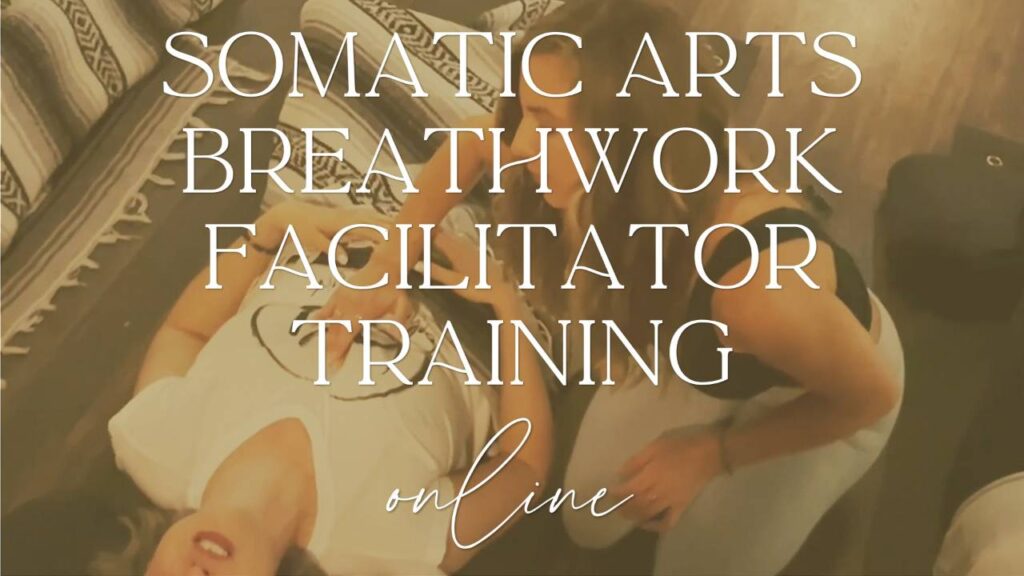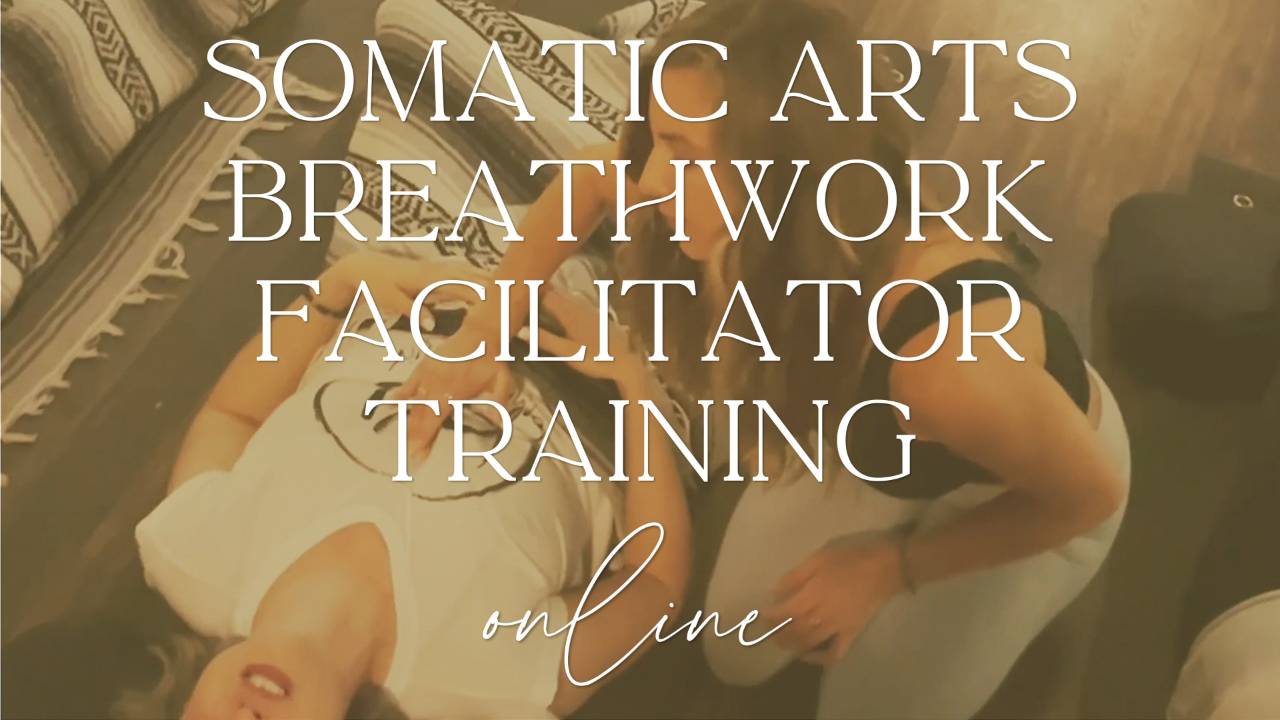
Unlock Inner Peace: Your Guide to Somatic Breathwork Training
In today’s fast-paced world, finding effective ways to manage stress and connect with our inner selves is more crucial than ever. Somatic breathwork training offers a powerful path to achieve this. It’s a holistic approach that combines conscious breathing techniques with somatic awareness, helping individuals release stored trauma, reduce anxiety, and enhance overall well-being. This article delves into the intricacies of somatic breathwork training, exploring its benefits, different modalities, and how to find the right training program for your needs.
What is Somatic Breathwork?
Somatic breathwork is a practice that integrates the mind, body, and spirit through conscious breathing. Unlike traditional meditation techniques that focus solely on mental stillness, somatic breathwork actively engages the body’s physical sensations. This integration is key to unlocking emotional blockages and promoting deep healing.
The term ‘somatic’ refers to the body and its felt sense. Somatic breathwork training therefore emphasizes the importance of feeling and processing emotions that may be trapped within the body. These trapped emotions often manifest as physical tension, chronic pain, or emotional distress. By consciously breathing and paying attention to bodily sensations, individuals can release these blockages and experience greater emotional freedom.
Benefits of Somatic Breathwork Training
The benefits of somatic breathwork training are far-reaching, impacting various aspects of an individual’s life:
- Stress Reduction: Conscious breathing techniques activate the parasympathetic nervous system, promoting relaxation and reducing stress hormones like cortisol.
- Emotional Release: Somatic breathwork helps release pent-up emotions and traumas stored in the body, leading to emotional healing and resilience.
- Increased Self-Awareness: By paying attention to bodily sensations during breathwork, individuals develop a deeper understanding of their emotional and physical states.
- Improved Mental Clarity: Releasing emotional blockages can clear mental clutter, improving focus and concentration.
- Enhanced Physical Well-being: Somatic breathwork can improve circulation, reduce muscle tension, and promote overall physical health.
- Spiritual Connection: Many practitioners report a deeper sense of connection to themselves and the world around them through somatic breathwork training.
Different Modalities of Somatic Breathwork
Several different modalities fall under the umbrella of somatic breathwork, each with its unique approach and techniques. Some of the most popular include:
Transformational Breathwork
Transformational Breathwork is a powerful self-healing technique that utilizes a full, connected breath to open up energy pathways and release emotional blockages. This modality often involves guided visualizations and affirmations to support the process.
Holotropic Breathwork
Developed by Stanislav Grof, Holotropic Breathwork combines accelerated breathing with evocative music and focused energy release. It aims to access non-ordinary states of consciousness to facilitate deep psychological exploration and healing.
Rebirthing Breathwork
Rebirthing Breathwork focuses on connecting with the breath patterns established during birth, aiming to resolve early childhood traumas and limiting beliefs. This modality often involves water immersion to simulate the birthing process.
Somatic Experiencing Breathwork
This approach integrates Peter Levine’s Somatic Experiencing principles with breathwork, helping individuals release trauma by gently guiding them through the body’s natural healing responses. It emphasizes titration, or gradually exposing the individual to the trauma, to avoid overwhelm.
Finding the Right Somatic Breathwork Training Program
Choosing the right somatic breathwork training program is crucial for a safe and effective learning experience. Consider the following factors when making your decision:
Accreditation and Certification
Look for training programs that are accredited by reputable organizations and offer recognized certifications. This ensures that the program meets certain standards of quality and professionalism. [See also: Breathwork Certification Programs]
Instructor Experience and Expertise
Research the instructors’ backgrounds and experience in somatic breathwork. Look for instructors who have a solid understanding of anatomy, physiology, and trauma-informed practices. Reading testimonials and reviews can provide valuable insights into the instructor’s teaching style and effectiveness.
Curriculum and Content
Carefully review the program’s curriculum to ensure that it covers all the essential aspects of somatic breathwork, including breathing techniques, somatic awareness, trauma-informed practices, and ethical considerations. The program should also provide ample opportunities for hands-on practice and feedback.
Program Format and Schedule
Consider your learning style and schedule when choosing a program. Some programs are offered in-person, while others are available online. In-person programs offer the benefit of direct interaction with instructors and fellow students, while online programs provide greater flexibility and convenience. Choose a program that fits your lifestyle and learning preferences.
Cost and Payment Options
Somatic breathwork training programs can vary significantly in cost. Research different programs and compare their prices. Inquire about payment options, such as payment plans or scholarships. Remember that investing in a high-quality training program can be a valuable investment in your personal and professional development.
The Somatic Breathwork Training Experience
Participating in somatic breathwork training is often a transformative experience. The training typically involves a combination of lectures, demonstrations, group exercises, and individual practice sessions. Participants learn various breathing techniques, explore somatic awareness, and develop skills to facilitate breathwork sessions for themselves and others.
A significant aspect of the training is personal exploration and healing. Participants have the opportunity to experience somatic breathwork firsthand, processing their own emotions and traumas. This personal experience is essential for becoming a competent and compassionate breathwork facilitator.
Ethical Considerations in Somatic Breathwork
Somatic breathwork can be a powerful tool for healing, but it’s essential to approach the practice with ethical awareness and sensitivity. Trauma-informed practices are crucial to ensure the safety and well-being of participants. This includes:
- Creating a Safe and Supportive Environment: Establishing clear boundaries, providing informed consent, and fostering a sense of trust and safety.
- Respecting Individual Boundaries: Recognizing that each individual has their own unique pace and process for healing.
- Avoiding Re-traumatization: Gently guiding participants through the process, avoiding techniques that could overwhelm or trigger them.
- Knowing Your Scope of Practice: Recognizing the limits of your expertise and referring clients to other professionals when necessary.
Integrating Somatic Breathwork into Your Life
After completing somatic breathwork training, you can integrate the practice into your daily life in various ways. You can use breathwork techniques to manage stress, improve sleep, enhance emotional regulation, and deepen your self-awareness. You can also offer breathwork sessions to others, helping them experience the transformative benefits of this powerful practice.
Whether you choose to become a professional breathwork facilitator or simply use the practice for personal growth, somatic breathwork training can empower you to live a more authentic, connected, and fulfilling life. The journey involves continuous learning, self-reflection, and a commitment to ethical and responsible practice. [See also: Advanced Breathwork Techniques]
The Future of Somatic Breathwork
As awareness of the mind-body connection grows, somatic breathwork is poised to become an increasingly popular and recognized modality for healing and well-being. Research is ongoing to further explore the benefits of breathwork for various conditions, including anxiety, depression, PTSD, and chronic pain. As the evidence base expands, somatic breathwork training will likely become more standardized and integrated into mainstream healthcare.
The increasing accessibility of online training programs is also making somatic breathwork more accessible to individuals around the world. This democratization of knowledge and practice has the potential to empower countless individuals to take control of their health and well-being.
Conclusion
Somatic breathwork training offers a profound opportunity to unlock inner peace, release emotional blockages, and enhance overall well-being. By combining conscious breathing techniques with somatic awareness, individuals can tap into the body’s innate healing capacity and experience greater emotional freedom, mental clarity, and physical vitality. Whether you’re seeking personal growth or professional development, exploring the world of somatic breathwork can be a transformative journey.

